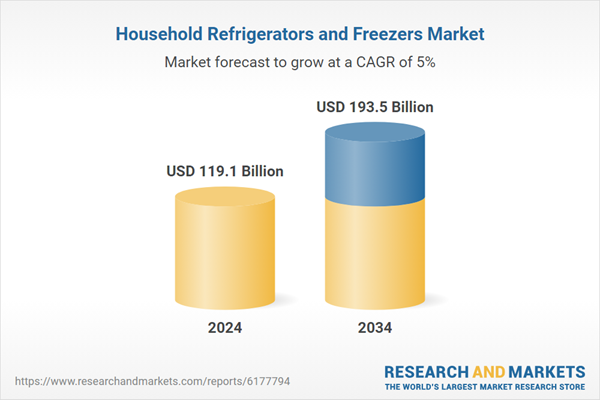Increasing consumer awareness about environmental sustainability and rising electricity costs are fueling the demand for energy-efficient home appliances. Consumers are now prioritizing appliances that offer advanced energy-saving capabilities without compromising on performance. This trend is further strengthened by growing government initiatives and regulatory policies promoting eco-friendly products. Simultaneously, households are adopting smart technologies that provide greater control and convenience. Modern refrigerators now come equipped with features like touchscreen panels, virtual assistant compatibility, and wireless connectivity, which allow users to manage storage, monitor inventory, and access integrated services remotely. The merging of smart homes with connected appliances continues to reshape the market landscape, reflecting shifting preferences for comfort, efficiency, and real-time responsiveness.
The top-mounted refrigerators segment generated USD 51.9 billion in 2024, maintaining its leading position in the market. These models, which place the freezer compartment above the main refrigerator section, remain popular for their affordability and space-saving design. Their lower price point makes them an ideal option for value-driven consumers across developed and emerging regions. Compactness, ease of use, and consistent performance continue to support their strong market presence.
The offline distribution channel segment held 78.4% share in 2024. In-store shopping allows buyers to physically inspect appliances, assess features, and make informed decisions with the guidance of trained sales staff. Consumers place significant value on personal assistance, immediate product demonstrations, and the added convenience of services such as delivery, installation, and maintenance, all of which are better facilitated through brick-and-mortar stores. This immersive, service-driven retail experience plays a major role in maintaining offline leadership in the appliance segment.
U.S. Household Refrigerators and Freezers Market held 74.9% share in 2024. Strong consumer purchasing power and a rising preference for premium, high-performance home appliances are driving adoption. The integration of intelligent home ecosystems is accelerating demand for refrigerators with smart features such as app control, energy monitoring, and digital interfaces. U.S. consumers are also highly responsive to innovations that align with sustainability goals, supporting the growth of energy-efficient models.
Major companies active in the Global Household Refrigerators and Freezers Market include Toshiba, Samsung, Whirlpool, Gree, Panasonic, LG, Midea, Haier, Arcelik, Liebherr, Hisense, BSH, Sharp, Hitachi, and Electrolux. Companies in the household refrigerators and freezers market are focusing on product innovation, sustainability, and digital integration to solidify their competitive position. Many brands are expanding their smart appliance portfolios by embedding IoT capabilities, AI-based inventory tracking, and mobile connectivity. To meet regulatory standards and consumer demand for eco-friendly solutions, manufacturers are enhancing energy efficiency through inverter technology and environmentally friendly refrigerants. Geographic expansion, particularly into emerging markets, is another core strategy, supported by localized production and retail partnerships.
Comprehensive Market Analysis and Forecast
- Industry trends, key growth drivers, challenges, future opportunities, and regulatory landscape
- Competitive landscape with Porter’s Five Forces and PESTEL analysis
- Market size, segmentation, and regional forecasts
- In-depth company profiles, business strategies, financial insights, and SWOT analysis
This product will be delivered within 2-4 business days.
Table of Contents
Companies Mentioned
The companies profiled in this Household Refrigerators and Freezers market report include:- Arcelik
- BSH
- Electrolux
- Gree
- Haier
- Hisense
- Hitachi
- LG
- Liebherr
- Midea
- Panasonic
- Samsung
- Sharp
- Toshiba
- Whirlpool
Table Information
| Report Attribute | Details |
|---|---|
| No. of Pages | 166 |
| Published | September 2025 |
| Forecast Period | 2024 - 2034 |
| Estimated Market Value ( USD | $ 119.1 Billion |
| Forecasted Market Value ( USD | $ 193.5 Billion |
| Compound Annual Growth Rate | 5.0% |
| Regions Covered | Global |
| No. of Companies Mentioned | 16 |









